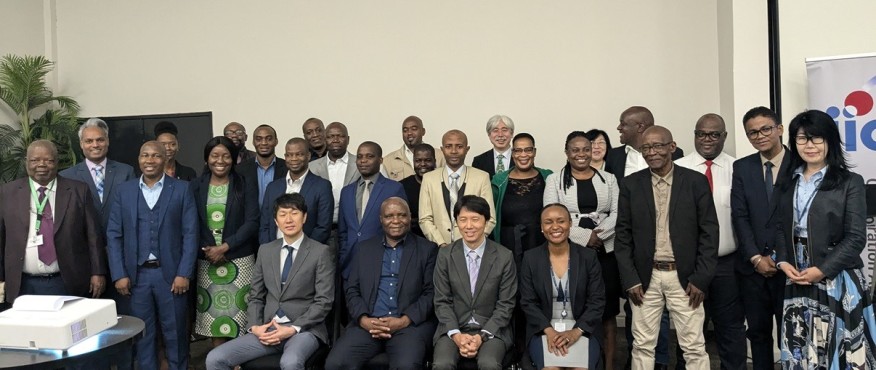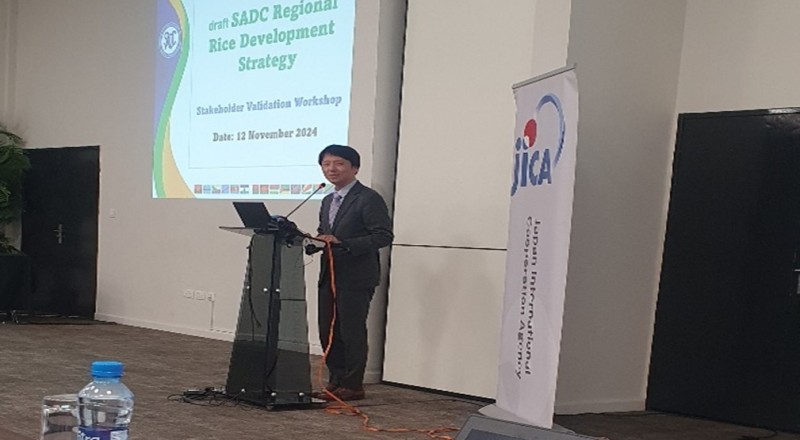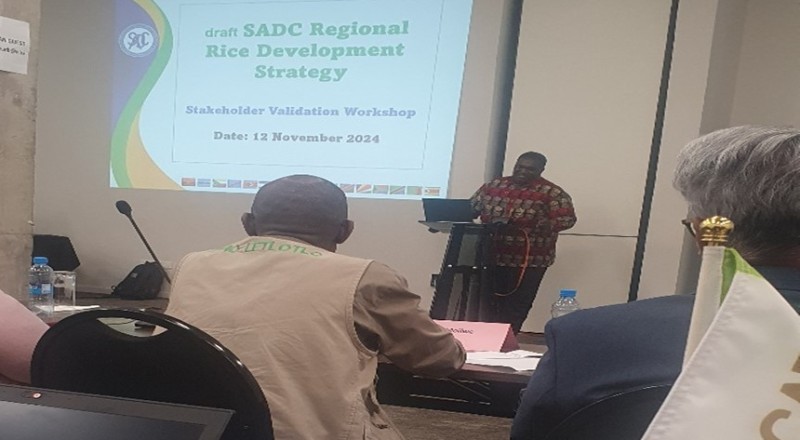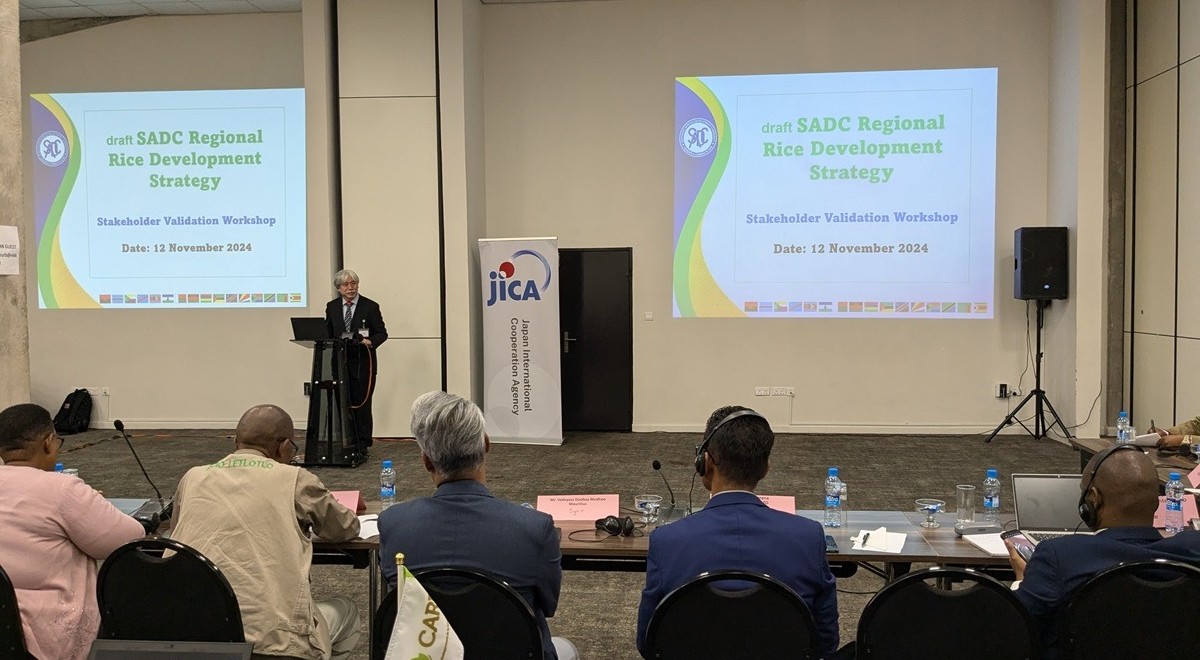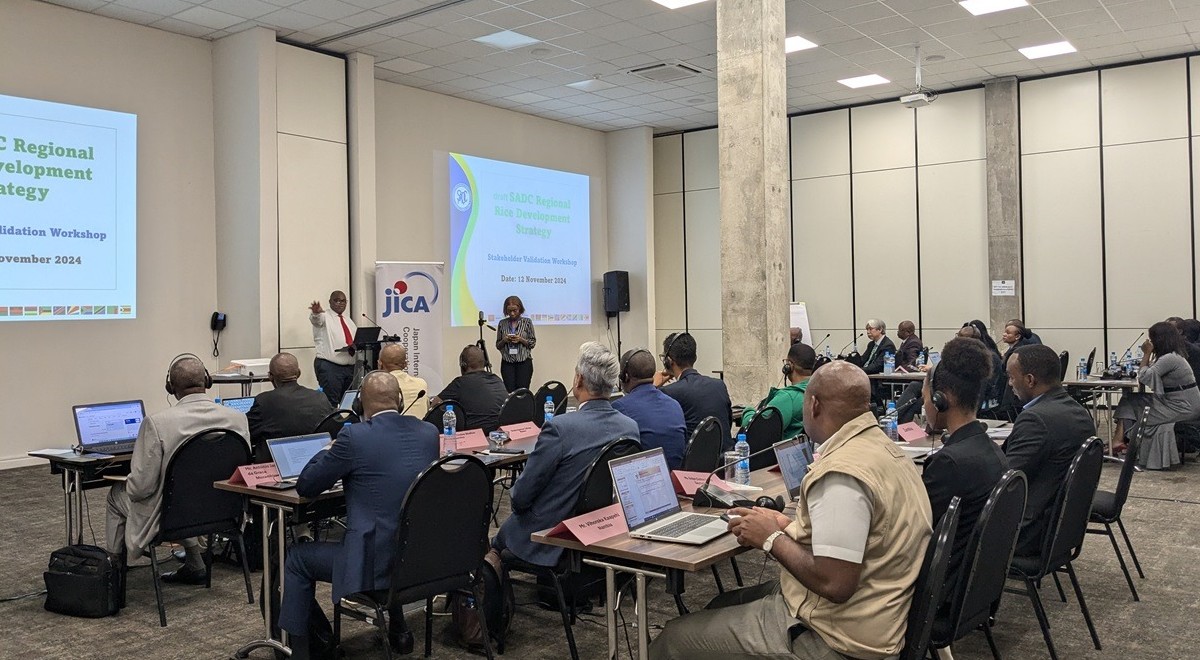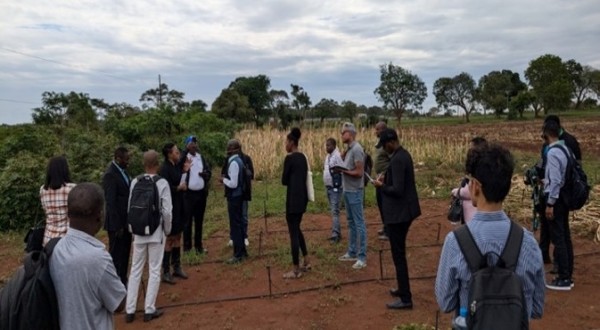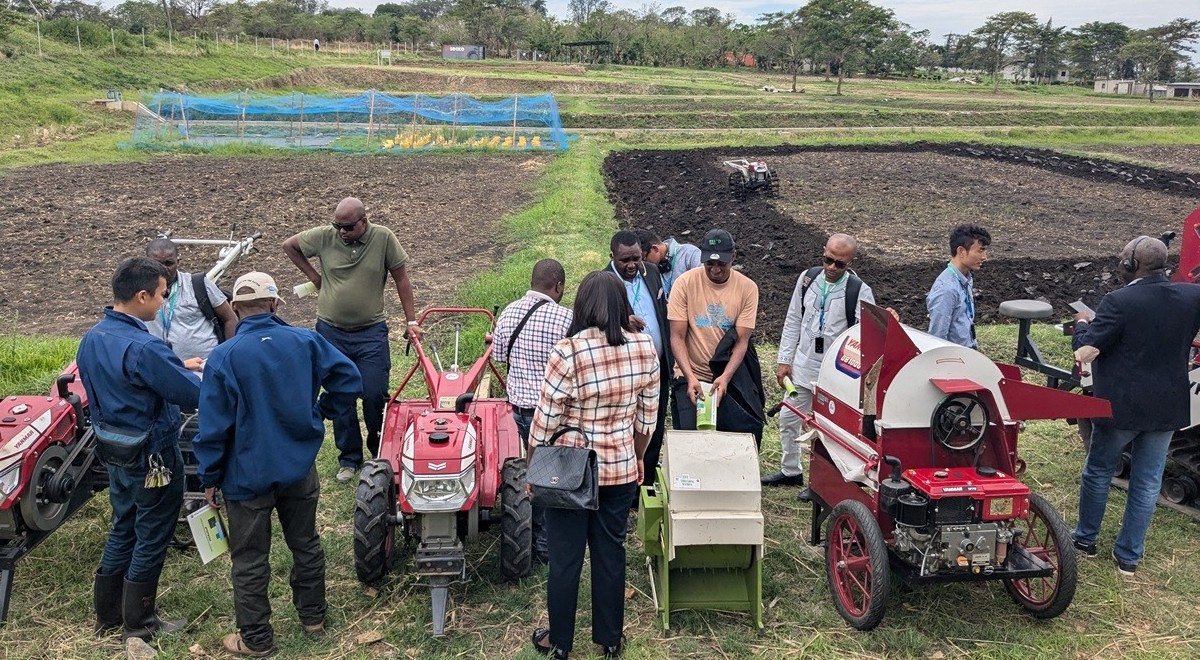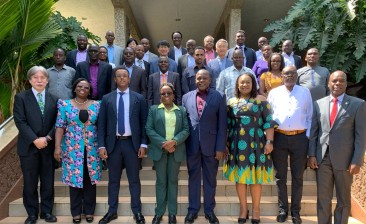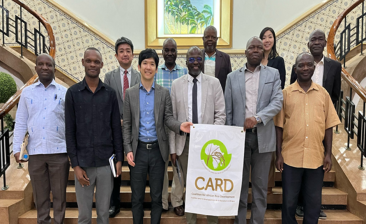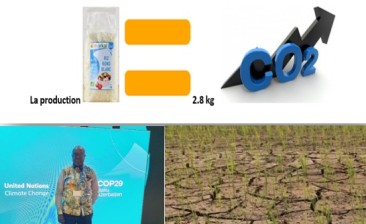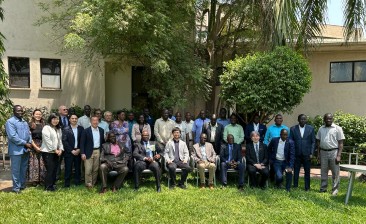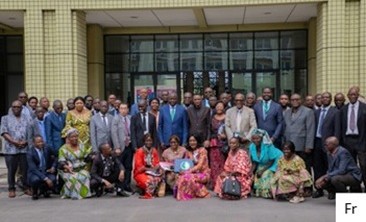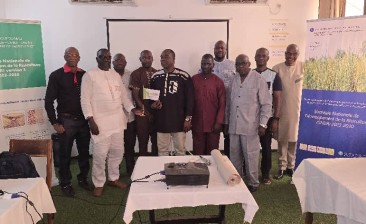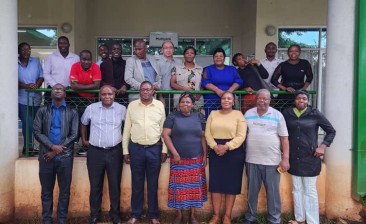SADC, November 2024
Validation of the Regional Rice Development Strategy (RRDS)
Background
In collaboration with Member States, the SADC Secretariat developed the Regional Rice Development Strategy in Lusaka, Zambia, from 12-14 November 2024. The meeting also provided a platform to deliberate on developing rice as a priority crop earmarked for regional value chain development. The meeting was also a means to sensitize Member States and all partners about the importance of the rice crop and review and validate the draft Regional Rice Development Strategy to promote a common approach guided by the proposed strategy.
Methodology
The RRDS validation meeting started with an Introduction/Quorum Roll Call followed by welcome addresses by the JICA representative in Zambia who recognized the efforts made by SADC and CARD to develop the Regional Rice Development Strategy; the SADC representative provided the objectives of the meeting emphasizing the importance of regional cooperation; the representative of the Zambia government appreciated SADC and CARD for choosing Zambia as the host for this event. The representative of Zimbabwe officially opened the meeting in his capacity of SADC Chair.
Presentations made during the Meeting
- General Coordinator of CARD
The General Coordinator provided the history of creation and evolution in terms of member countries and development partners, as well as the organizational structure of CARD. He emphasized the role of CARD as a) Supporting formulation, implementation, monitoring, evaluating, and revising the National Rice Development Strategies; Rice Seed Development Strategies, Mechanization Strategy, and Regional Rice Development Strategy c) Preparation and conduct of General Meetings and Steering Committee Meetings d) Share knowledge through CARD website, and newsletters d) Support implementation of training conducted by Steering Committee members (e.g., AfricaRice, IRRI, JICA) e) Promote South-South Cooperation f) Strengthen and widen the CARD network and promote collaboration with development partners other than Steering Committee members and private sector actors.
- SADC Secretariat
The SADC Secretariat presented the proposed Regional Rice Development Strategy (SRRDS). The Strategy elaborates on key interventions necessary for promoting the competitiveness of the rice sub-sector premised on the collective commitment of the SADC Member States to fast-track equitable and sustainable development of the region through structural transformation and diversification of the regional economy and development of high-potential industrial value chains. The SRRDS targets producing an average of 14,514,000 metric tons of paddy rice (equivalent to 9,435,000 metric milled rice) between 2025 and 2030.
- Objectives of the SRRDS
The Regional Rice Development Strategy envisages the perusal of the following specific objectives:
- Boost rice production and productivity.
- Dissemination of harmonized production, processing, and intra-regional trade mechanisms.
- Promote better utilization of rice by-products.
- Value-adding in compliance with SADC standards, packaging requirements, and food safety and hygiene requirements.
- Policy and regulatory measures to strengthen local, national, and regional enabling environments for increased productivity, value addition, trade, profitability, competitiveness, inclusion, and resilience.
- Implementation Mechanism
- Each Member State will have a Lead National Industry Association to champion the implementation of the Strategy.
- A SADC Rice Desk shall be established to facilitate the interactions amongst the coordinating members and will be managed by the SADC Rice Advisor.
- The SADC Rice Desk shall liaise with the SADC and CARD Secretariats, development partners, line Ministries, and NRDS Task Force members of the Member States for SRRDS implementation.
- The Advisor shall also organize communications, regular meetings of SRRDS and stakeholders’ workshops/conferences, and assist in lobbying for funds for project concepts from governments, development partners, and other potential stakeholders
- Working Groups
After the presentation of SRRDS, the participants were organized into two breakout working groups to discuss the following points previously prepared by the SADC Secretariat:
- To what extent does the SRRDS meet the objectives it was set out for?
- What are the Gaps?
- What are your recommendations?
- Given your review above, do you validate the report and recommend it for consideration by Ministers?
- Recommendations from Working Groups
The Working Groups agreed that the SRRDS meets the objectives it was set out for but some areas need to be improved to address some of the gaps as suggested below.
- To encourage the SADC Member States which have not yet developed their strategies, to develop them in collaboration with Development Partners through the CARD Secretariat.
- Harmonize strategies for intra-regional trade among member States.
- Need to unpack the technologies on Mechanization to include hand tools
- Separate storage infrastructures from general mechanization strategies
Overall, the working groups validated/endorsed the proposed draft and recommended its submission to the Ministers responsible for Agriculture and Food Security and Fisheries and Aquaculture for approval.
